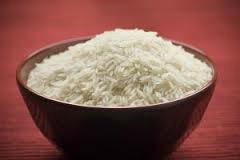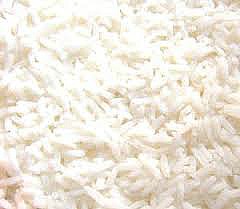Different Types of Rice
| My Guide to Rice
Stick around to found out some interesting facts about rice and how the different types of rice contribute to the diet of people all over the world.

Rice is Life
Rice is one of my absolute favorite dishes. But I'm only one of the millions of rice lovers out there. In fact, did you know that more than 3 billion people worldwide - yes that's about half of the world's population- depend on rice as their staple diet! Rice is important to so many peoples and cultures around the world. In Sanskrit, the word for 'rice', also meant sustainer of the human race. And its no surprise why considering the key role it plays in billions of lives. But you see, rice comes in a variety of different forms. So let me tell you a bit about the different types of rice around our planet.

Rice Surprise | Different types of Rice
As I mentioned before, rice has a far richer diversity than the average supermarket suggests. Actually, there are more than 40,000 different varieties of rice!
Different types of rice may also have different levels of starch, causing one type of rice to be 'stickier' or 'looser' than another. Rice is generally categorized into whole grain or white rice, as well as by the length of the grain.
Whole grain rice is minimally processed and so retains a nutrient rich husk. The cooking time for whole grain rice is typically longer than that for milled white rice, since it is not husked. Whole grain rice tends to be more flavorful, aromatic and colorful. The most common variety of whole grain rice is brown rice; the lesser known types are black rice and red rice.
Black Rice is a rice grain that looks like wild rice when dry. It turns deep purple when cooked and has rich and nutty flavors. The glutinous variety is the black sticky rice, which is mainly used in many Chinese and Southeast Asian desserts. Red rice is unpolished and the color of the bran is maroon-red with the smell of husk. Also known as red cargo rice, it has a chewy texture compared with white rice and it tastes nutty when cooked.
White rice is often referred to as polished since the outer husk is removed and the layers of bran are milled till the grain is white. White rice requires less cooking and has a milder flavor. It also has less nutritional value than the wholegrain variety.

Milled white rice is versatile and can be eaten plain, served with curries and vegetables, or cooked as flavored rice. The popular aromatic or Jasmine rice gives a mild fragrance when cooked.
White
glutinous rice is short and plump with a chalky white, opaque kernel.
When cooked, it loses shape and becomes sticky. It is very starchy,
often cooked by steaming and typically used in desserts, such as rice
pudding.
Short grain rice, also referred to as sushi rice, have soft yet firm grains that cling together but remain separate. There's a nice glossiness to this rice and a sweet flavor. Unlike most rice varieties, these short grain ones are edible cold , straight from the fridge. ( Not that you would want to.)
Long grain rices are four to five times longer than it's width cook up dry, separate, dry and fluffy. This rice is available in brown, parboiled, precooked and regular milled forms, some of which we have already mentioned. It is regarded as an all purpose rice.
Thanks for reading! If you liked this content, share with a friend:
Recent Articles
-
The Best Python Courses Online
Apr 11, 25 10:19 PM
Here are the best python courses online to help you learn python programming and and practice your new skills through hand-ons projects and exercises. -
What I Wish I Knew About the Duality of Life
Mar 30, 25 06:06 PM
Good and bad, light and darkness, highs and lows - these are all elements of a rich, rewarding existence. Here's what I wish I knew about the duality of life. -
The Best Video Editing Courses Online
Mar 27, 25 12:14 PM
Here are the best video editing courses to help you advance from beginner to pro and create high-quality videos.



